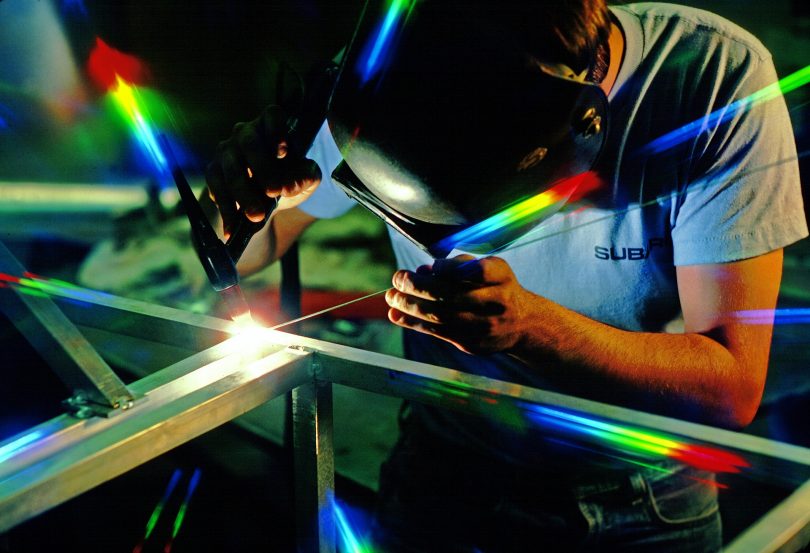Manufacturing is a major sector in Australia and has been identified by industry players as a key area for innovation and development.
Reports from various expert organisations and a crowd-sourced plan put forward from the Australian community promotes the sector’s need for greater investment by government. Both have identified opportunities for local and foreign companies to support this development.
Take a look at the opportunities for innovative business to facilitate the growth and sustainable development of manufacturing in Australia.
New Deal plan for manufacturing in Australia calls for greater innovative practice
In June 2020, Australian manufacturing communities, academics and industry experts contributed to a crowd-sourced initiative led by @AuManufacturing to design a plan to support the growth and sustainability of the manufacturing sector in Australia.
The plan outlines five building blocks for success, including:
- Greater innovation and more robust policy-making
- Greater collaboration between industry and researchers
- Comprehensive business services and infrastructure
- Procurement policies geared towards supporting local business and adopting research-based manufacturing operations
- Development of the workforce and management skills
The plan expresses concern that Australian manufacturing is not receiving the attention it needs to adapt to increasing modernisation and stay internationally competitive.
A crucial sector in Australia
Manufacturing plays a crucial role in supporting the Australian economy. According to the Australia Industry Group, manufacturing is, “Australia’s seventh largest industry for employment and sixth largest for output.” The Group believes the sector has been in expansion since 2016, having shown resilience against major challenges such as the Global Financial Crisis, the rise of manufacturing giant China, rising operational and input costs and closing automotive assembly operations. Manufacturing is expected to grow further in the next five years.
Australia’s manufacturing exports are diverse and include iron, steel, machinery, transport equipment, pharmaceuticals and professional and scientific instruments.
In 2019, Australian manufacturing contributed around AU$104,505 million to the country’s GDP.
As an integral part of the country’s economy, and with a proven track record of resilience in spite of global challenges, there is opportunity for innovative businesses to continue supporting the growth of the sector.
International interest in Australia’s manufacturing sector
Manufacturing received 12.9% of the Foreign Direct Investment (FDI) received by Australia in 2019. This amounted to AU$131.4 billion of the total AU$1,019.5 billion. The Department of Foreign Affairs and Trade (DFAT) noted an 18.6% increase in FDI in manufacturing from 2018.
Overall, Australia’s largest investors are the United States, followed by the United Kingdom, Belgium, Japan and Hong Kong.
Manufacturing’s large claim of FDI indicates the potential in the sector perceived by international players.
Industry 4.0 and the transition to smart factories
Worldwide, manufacturers are managing a necessary transition towards smart factories and virtual production processes, driven by the digital revolution sweeping most industries.
Key innovations identified by Datumize as part of this development include:
- Virtual manufacturing
- Micro manufacturing and machine vision error detection
- Industrial robotics
- Workplace sensors
- Automated warehouses and smart recycling
- 3D printing
- Exoskeletons for workers
These innovations support a move towards greater automation, waste management, production quality and safety in the workplace.
Opportunities for manufacturing service and other innovation in Australia
As mentioned in the New Deal plan and by Australia Industry Group, Australia’s manufacturing sector does face issues with digitalization and technological development amid the global fourth industrial revolution. The country’s manufacturing community stresses the importance of adopting innovative technology and making a concerted effort to modernise the sector in order to support sustainable growth and remain internationally competitive.
The Australian Industry Group reported a marked increase in diversification of strategies by manufacturing CEOs in 2019. This included:
- Introducing new products and services (this was the highest ranked strategy in 2019)
- Improving sales of current products (highest ranked strategy in 2018)
- Downsizing and/or reducing operational costs
- Increasing advertising
- Developing new overseas markets
- Increasing online presence
According to the World Economic Forum, Australia is flagged as a country showing high potential for innovation in terms of its readiness for the future of production. The Forum noted Australia was, “in a strong position to potentially improve its production base in the future, as it performs well across all 31 drivers of production.”
The New Deal for Manufacturing plan calls for greater migration towards research-based manufacturing and greater government expenditure on innovation to support the sector’s development.
The Australian Industry Group notes an increase in investment in digital technologies and focus on integrating these technologies in manufacturing operations and supply chains.
The group recognised, “Manufacturing workplaces increasingly rely on complex operational and organisational structures relating to design, decision-making, coordination, stock control, quality control, distribution, sales and support services. Significantly higher demands are being placed on the workforce in terms of managing high-level complexity, abstraction, connectivity and problem solving.”
Local and foreign companies can therefore benefit from offering innovative service solutions to these challenges the sector faces. Automating processes, reducing costs, facilitating decision-making, delivery and sales are key areas that service companies can leverage to succeed in the Australian market.
“The opinions expressed by BizWitty Contributors are their own, not those of BizCover and should not be relied upon in place of appropriate professional advice. Please read our full disclaimer."







